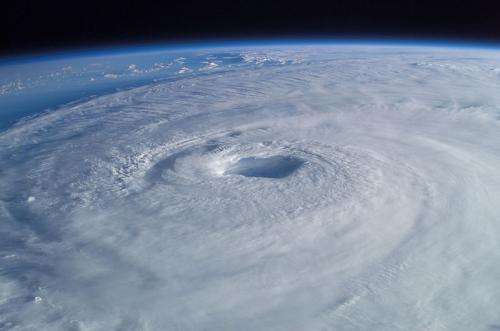Study highlights growing threat of intense tropical cyclones hitting East Asia

The intensity of tropical cyclones hitting East Asia has significantly increased over the past 30 years, according to a new study published today.
The coastlines of China, Korea and Japan in particular have experienced increasingly stronger cyclones, which the researchers have attributed to increasing sea surface temperatures and a change in atmospheric circulation patterns over the coastal seas.
According to the study, the changes in sea surface temperature and wind flows meant that cyclones were more likely to track along coastal seas from the South China Sea upwards, meaning that by the time the cyclones hit the north-east coast of Asia they had gathered more energy than usual and were at their maximum intensity.
The study, which has been published today, 16 January, in IOP Publishing's journal Environmental Research Letters, involved an analysis of five separate data sets that documented the evolution of tropical cyclones across the north-west Pacific between 1977 and 2010.
The researchers also found that in south-east Asia, in countries such as Taiwan and Vietnam, there was no substantial change in the intensity of tropical cyclones. Here, they found that tropical cyclones had started to generate too close to land in the South China Sea to gather enough energy to reach maximum intensity as they approached land.
In addition to increasing sea surface temperatures in the western Pacific, which have notably warmed over the past 30 years, the researchers also attributed the changes to the strengthening of the Walker circulation—an ocean-based atmospheric circulation system that exists over the Pacific.
According to the researchers, the Pacific Walker circulation strengthens as the difference in sea surface temperature between the warmer western Pacific and the colder central-eastern Pacific increases. The result is that the wind flows associated with the circulation pattern force the tropical cyclones towards the north-east coast of Asia, where they reach maximum intensity.
Although the study only accounts for natural variations in sea surface temperature and the Walker circulation retrospectively, over the past 30 years, the researchers do predict that the tropical cyclones hitting East Asia will only strengthen under human-induced climate change.
Professor Chang-Hoi Ho, from Seoul National University, said: "Noticeable increases of greenhouse gases over the globe could influence rising sea surface temperature and change large-scale atmospheric circulation in the western North Pacific, which could enhance the intensity of tropical cyclones hitting land over East Asia.
"If the past changes of large-scale environments are evidence or a result of global warming, it can be assumed that, in the future, more catastrophic tropical cyclones will strike East Asia than ever before.
"The next stage of our research is to use climate models to predict future tropical cyclone landfall intensity in these regions."
More information: 'Growing threat of intense tropical cyclones to East Asia over the period 1977-2010' Doo-Sun R Park, Chang-Hoi Ho and Joo-Hong Kim 2014 Environ. Res. Lett. 9 014008, iopscience.iop.org/1748-9326/9/1/014008/article
Journal information: Environmental Research Letters
Provided by Institute of Physics










.jpg)









